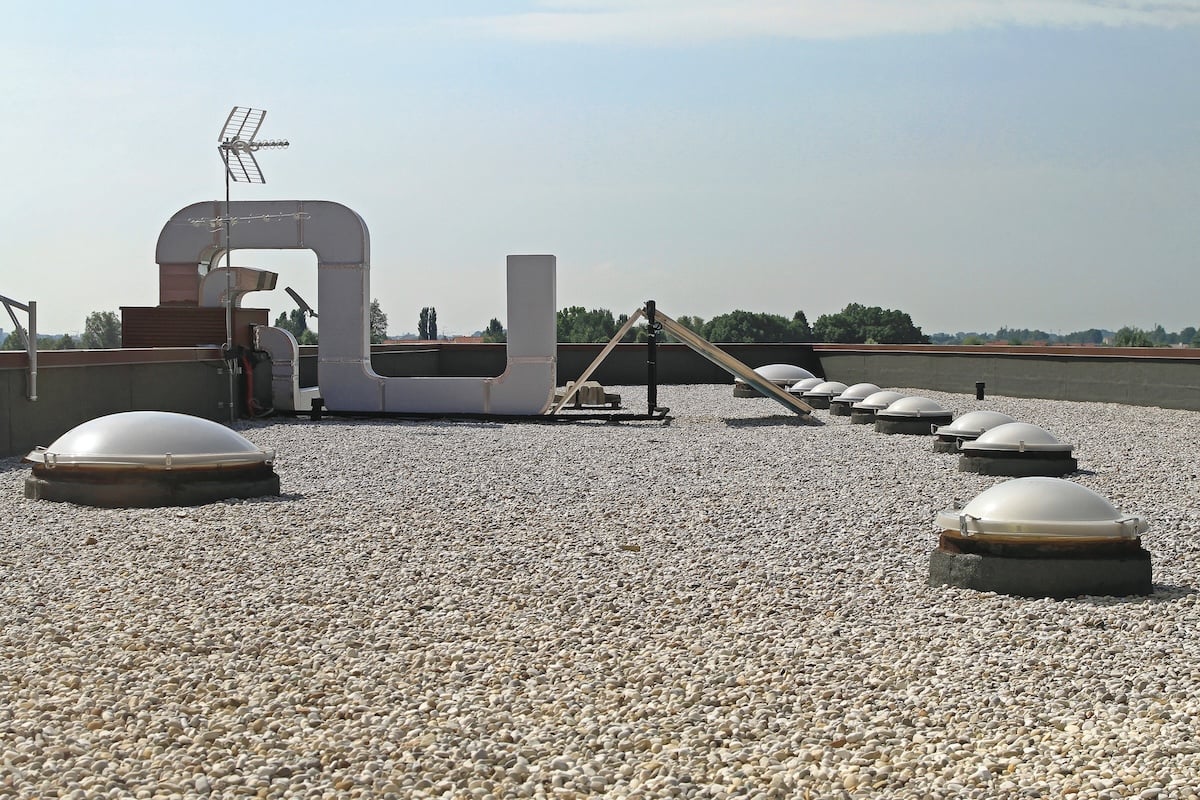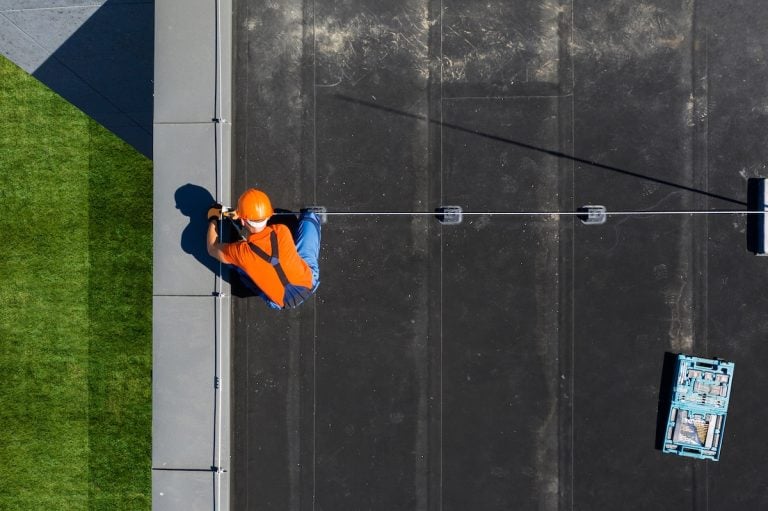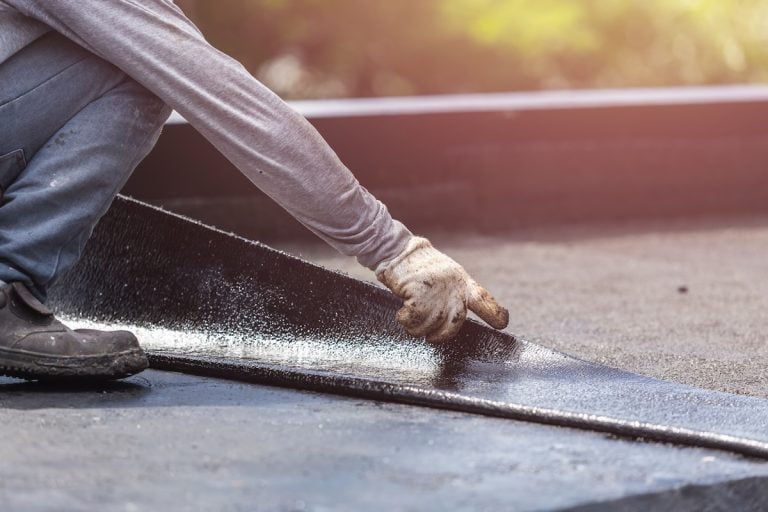If you’re evaluating flat roofing solutions for your commercial building, warehouse, or office complex, a tar and gravel roof remains one of the most reliable and cost-effective systems in use today. This proven method—technically known as built-up roofing (BUR)—has protected large structures for decades, offering durability, UV protection, and multi-layer defense.
In this blog, you’ll learn:
- How a tar and gravel roof is built
- Major pros and cons for commercial buildings
- Maintenance tips to protect your investment
🪨 What Is a Tar and Gravel Roof?
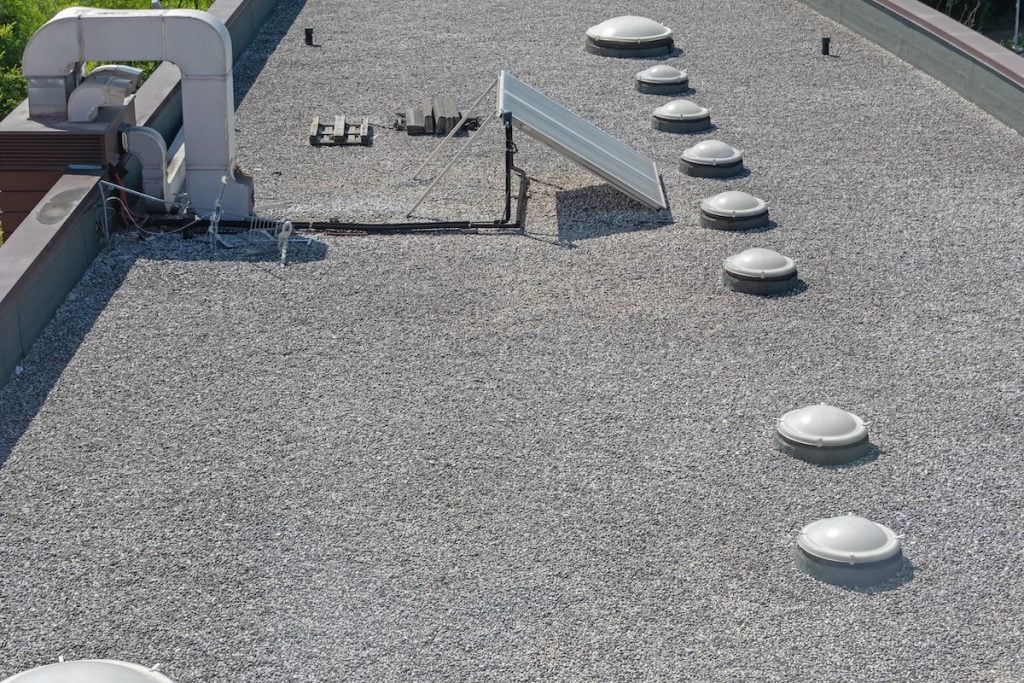
Built-Up Roofing (BUR) for Commercial Applications
A tar and gravel roof, or built-up roof (BUR), is a multi-layer roofing system commonly used on flat or low-slope commercial roofs. It consists of alternating layers of roofing felt or fiberglass fabric and hot-applied tar or asphalt. A final layer of gravel is applied to shield the surface from UV rays, impact, and foot traffic.
Common Commercial Uses
- Flat roofs on retail centers, office buildings, and warehouses
- Durable surface for service access and rooftop equipment
- Cost-effective coverage for large square footage
✅ Pros of a Tar and Gravel Roof
Long-Lasting Protection
- Durability: With proper maintenance, these roofs can last 20 to 30 years—even longer in mild climates.
- UV resistance: The gravel layer protects the asphalt base from harmful sunlight and thermal cracking.
- Multi-layer redundancy: If one layer is compromised, additional layers help prevent immediate leakage.
Excellent Fire Resistance
- Non-combustible surface: Asphalt and gravel offer strong protection against fire spread—an asset in urban or high-risk environments.
Budget-Friendly Installation and Repair
- Lower upfront cost: Especially compared to membrane or metal roofing systems for large buildings.
- Isolated patching possible: Leaks or damage can often be repaired without needing a full tear-off.
❌ Cons of a Tar and Gravel Roof
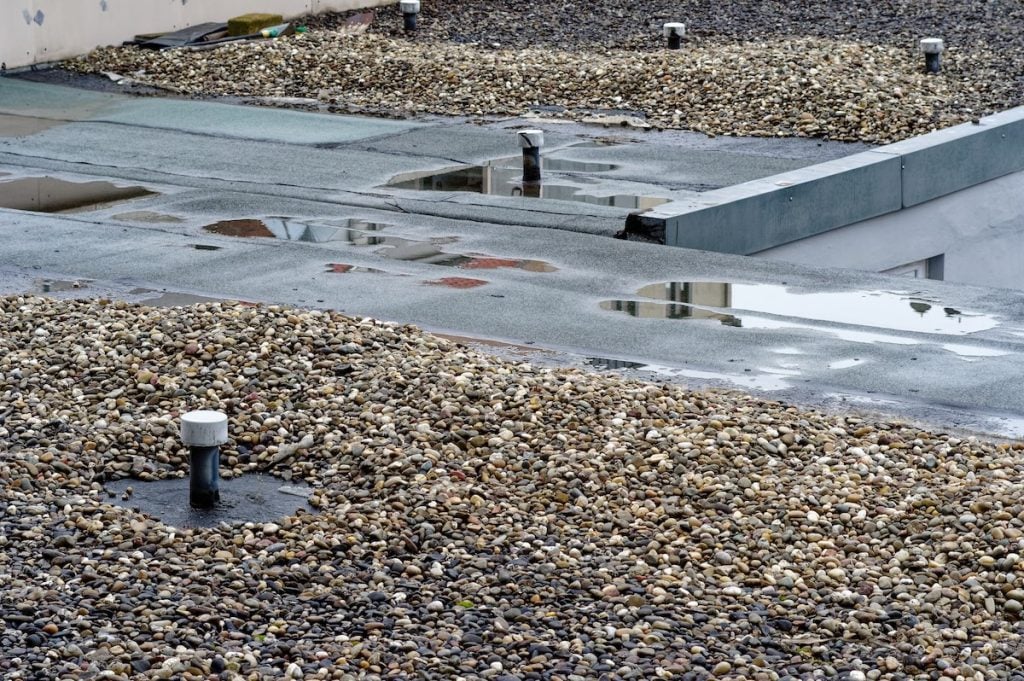
Weight and Structural Load
- Heavy system: Multiple layers and gravel add significant weight, especially on large commercial roofs.
- Reinforcement may be required: Some buildings may need additional support framing before installation.
Leak Detection and Access Challenges
- Difficult to inspect visually: Gravel can obscure small cracks or weak spots.
- Slower repairs: Gravel removal is often needed before pinpointing the source of a leak.
Slope and Aesthetic Limitations
- Only suitable for flat or low-slope roofs: Not compatible with steep pitch designs.
- Not intended for visibility: Aesthetics are limited compared to metal or membrane systems on high-profile buildings.
🛠️ Installation and Components
How It’s Built
A typical commercial BUR installation follows these steps:
- Base layer: Roofing felt or fiberglass rolls are installed
- Bitumen application: Hot tar or asphalt is mopped or sprayed over the sheets
- Repeat: Layers are alternated to create a strong waterproof membrane
- Top layer: A heavy coating of gravel is embedded for UV protection and durability
System Variations
- Cold-applied BUR systems: Use adhesives instead of hot tar for safer installation
- Reflective coatings: White gravel or aluminum-based coatings improve thermal performance and meet cool roof standards
⭐️ 6 Maintenance Tips for Commercial Tar and Gravel Roofs
- Inspect After Storms
- Why it matters: Wind and rain can displace gravel and expose lower layers
- What to do: Look for bald spots, pooling, or bubbling after every major weather event
- Keep Roof Drains Clear
- Why it matters: Flat roofs depend on consistent drainage to prevent ponding
- What to do: Clean scuppers, drains, and downspouts monthly—or more often during fall
- Watch for Vegetation Growth
- Why it matters: Weeds or moss can compromise the waterproof membrane
- What to do: Remove growth promptly and inspect for underlying damage
- Reapply Gravel as Needed
- Why it matters: Wind, water, and foot traffic can shift gravel away from key areas
- What to do: Hire professionals to redistribute or supplement gravel coverage annually
- Schedule Annual Professional Inspections
- Why it matters: Early detection of cracks, blistering, or separation saves thousands in long-term repair
- What to do: Get on a routine inspection schedule, especially for older roofs
- Patch Small Issues Promptly
- Why it matters: Minor damage can turn into major leaks if ignored
- What to do: Use compatible patching systems and keep repair documentation for your records

❓ FAQs About Tar and Gravel Roofs for Commercial Properties
How long do tar and gravel roofs last?
- 20 to 30 years is typical, but regular maintenance can extend that timeline. Lifespan depends on climate, UV exposure, and foot traffic.
Can building maintenance crews walk on this roof?
- Yes, with caution: The gravel layer makes it safer to walk on than some membranes, but traffic should still be limited and walkways added near HVAC units.
Is it an energy-efficient system?
- With modifications, yes: BUR systems with white gravel or reflective coatings can improve energy performance and meet local cool roof guidelines.
Are there better options for high-visibility buildings?
- Possibly: If aesthetics or rooftop branding are priorities, you might consider single-ply membranes or metal systems for a cleaner finish.
💪 Is a Tar and Gravel Roof Right for Your Property?
A tar and gravel roof remains a dependable choice for commercial flat roofs, especially when budget, fire resistance, and durability are top priorities. While it requires more intensive inspection and maintenance compared to some modern alternatives, its proven track record and affordability continue to make it a smart option for many commercial property owners.
The best way to determine if this system fits your building is to speak with a commercial roofing specialist who can assess your current roof structure, local climate needs, and long-term goals.
Connect with Roof Medic today to get expert input on your commercial roofing project. Whether you’re maintaining an existing BUR system or considering an upgrade, we’re here to help you protect your property and plan for long-term performance.
